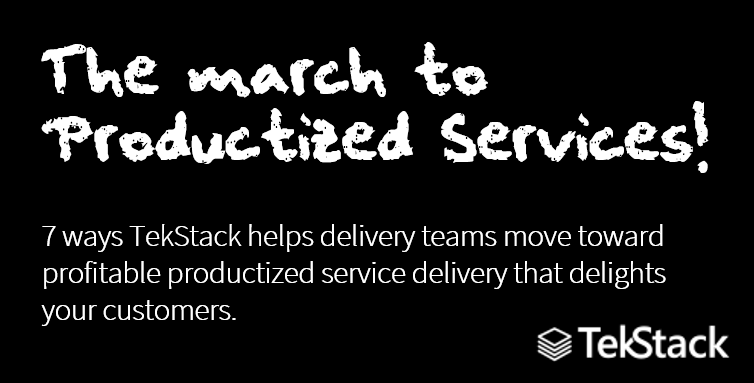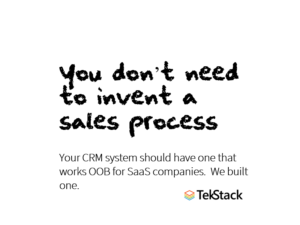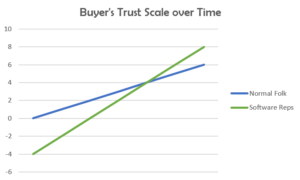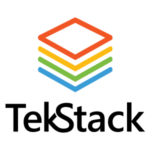
Many software companies are under increasing pressure to provide lower cost, lower risk deployment models to customers. Some consider this to be part of the ‘consumerization of IT’ or a bi-product of the app economy. Customers increasingly expect SaaS-based products to be Out-of-the-box ready.
But! That said, the move away from open-ended T&M projects, towards Productization of Services, (starting with Fixed Price Delivery) should be considered a real game-changer for companies:
- It provides an opportunity to shift more revenues to subscription (higher value revenue),
- it gives you a real competitive advantage on deals and therefore increases your win rates;
- it will become a great source of cash and profit.
Is your company ready for Services Productization?
But the fact is there are many companies that aren’t operationally ready to make the move. Sure you can change your revenue models, but the delivery team may still be measured on old utilization metrics; or finance is under/over recognizing revenue, or the products aren’t ready to deploy as OOB, putting more pressure on services and product teams. How do you make the shift so that you can move towards fixed-price or productized services profitability? All the while improving the customers’ experience.
This is a key area of focus for us with TekStack, that’s why we build the following capabilities into our integrated project delivery module called DeliveryStack.
7 Things TekStack wanted to achieve for you:
1) Delivery Team alignment with Sales.
The delivery team should be seen as an arrow in your quiver, not a sales blocker. I’ve been there too, the desire to get the quote out, deal done; “I can’t wait for services to give me this quote, I’ll just use the SOW from the last deal I won. A couple of little modifications, boom! Good to go!” This starts a bad chain of events. Services don’t know what’s coming, customer expectations are not aligned from the very start, and the worst thing, Services see you as an enemy combatant! We wanted to create a process that does it right from the beginning. Integrating project templates right in the quoting process eliminates 80% of the effort for the PMO to provide a quote; alerts services they have work to do, even put an internal SLA counter on the request. Providing a high-quality SOW output that you’d be proud to show your customer.
2) Managing Project Gross Margin.
Project plans should include labor costs that allow you to track planned Gross Margin against Expected Gross Margin. The project template not only includes WBS but also role assignments. Those roles have average cost rates when multiplied by the effort to provide a project labor cost. We then can generate a grossed upsell price on the work using predefined GM targets. We even set up the billing milestones that signal to the account that invoicing should occur. The best part is that as the project unfolds, as your resources complete the work, they can tell you if they need more time or less, which ultimately impacts the expected gross margin. You’ll know if week if you are on track or off; and if off-track you’ll have an opportunity to mitigate.
3) Keep the Delivery Team busy!
Scheduling and Assigning resources is key to maximizing ‘utilization’. We wanted to provide an easy view of who is hitting their ‘utilization’ targets and who isn’t. Utilization is in parenthesis because we are using a word that has a bad connotation to it. Really we just want to figure out who has the capacity to do custom work and who doesn’t. If someone does, and they have the skill to perform a task, you should give them the task to complete. We can look back at historical utilization (trends are good), but more importantly, we can look forward to seeing who is available to be booked. It’s the utilization that is so key to the delivery team’s success. Many teams struggle to manage to 80% utilization, that is 80% of their time going to efforts that are customer project tasks. And most of that is because of visibility, scheduling, and task assignment.
4) Make it easy for Team Members to provide feedback.
Entering time sucks. We are still working on the killer app and very soon we will have an Outlook integration that sucks in your calendar appointments to serve as the basis for your time entry. We are also working on a slick PowerApp that works on your phone to easily capture time on the fly. In the meantime the web-based time entry and tasks views allow consultants to easily see the tasks they are assigned, their progress on the task, and provide input if they need more effort to get the job done. Collaboration in Teams makes it easy to communicate with other team members.
5) Better Customer Communication
Customers should have instant access to a project’s progress, not just at milestones or periodic status updates (though those are still very important!) We’ve built a portal experience for customers that lives the duration of their lifecycle with you. From the day they start a project indefinitely through their support experience and future projects. They can have access to anything you want to give them including project information like Progress against task, invoices and billing information, project milestones, documents, a fluid RAID log; and more.
6) Improve management of Risks and Changes.
Project Risks, Actions, Issues, and Decisions (RAID) should be managed centrally. Lessons Learned should be captured to improve performance on the next project. Managing RAID logs, the normal experience (we are still guilty of it on a couple of projects too) is to store the RAID items in a spreadsheet. Normal confusion ensues. Where is the file? Can you email it to me? I can’t access it! We’ve all lived it. RAID is really really important to fixed price and productized projects. It should be dead easy to catch risks and issues, and decisions the customer makes that might shift the projects’ efforts or timelines. If it’s not easy it won’t get done.
7) Revenue Recognition should be a natural by-product of the work you do.
Your delivery team likely has numbers to hit. It’s tempting to overvalue your work to make your number, but it’s also possible for accounting to roll back your revenue recognition because you can’t validate the progress you made. We wanted to solve that with two things: Setting up milestones for invoicing (the cash isn’t technically a big deal for revenue rec but its all related in the end); as well as project milestones that capture customer’s sign off (good to have acceptance of progress!). What actually drives our revenue recognition and ultimately what we punt up to accounting is the progress complete. Recognize the progress on the project for every billing cycle so that you can prove that the work you did should be considered revenue.
Each one of these items will feature as a product update post in the coming week complete with videos and screenshots; however, I thought it was important to tie our product vision for service teams altogether. The delivery team is an absolutely critical group to your overall company success. Give them a fighting chance by providing the tools to do the job. If you are interested in a sneak to peek, let me know! We are happy to schedule a conversation and product tour!









